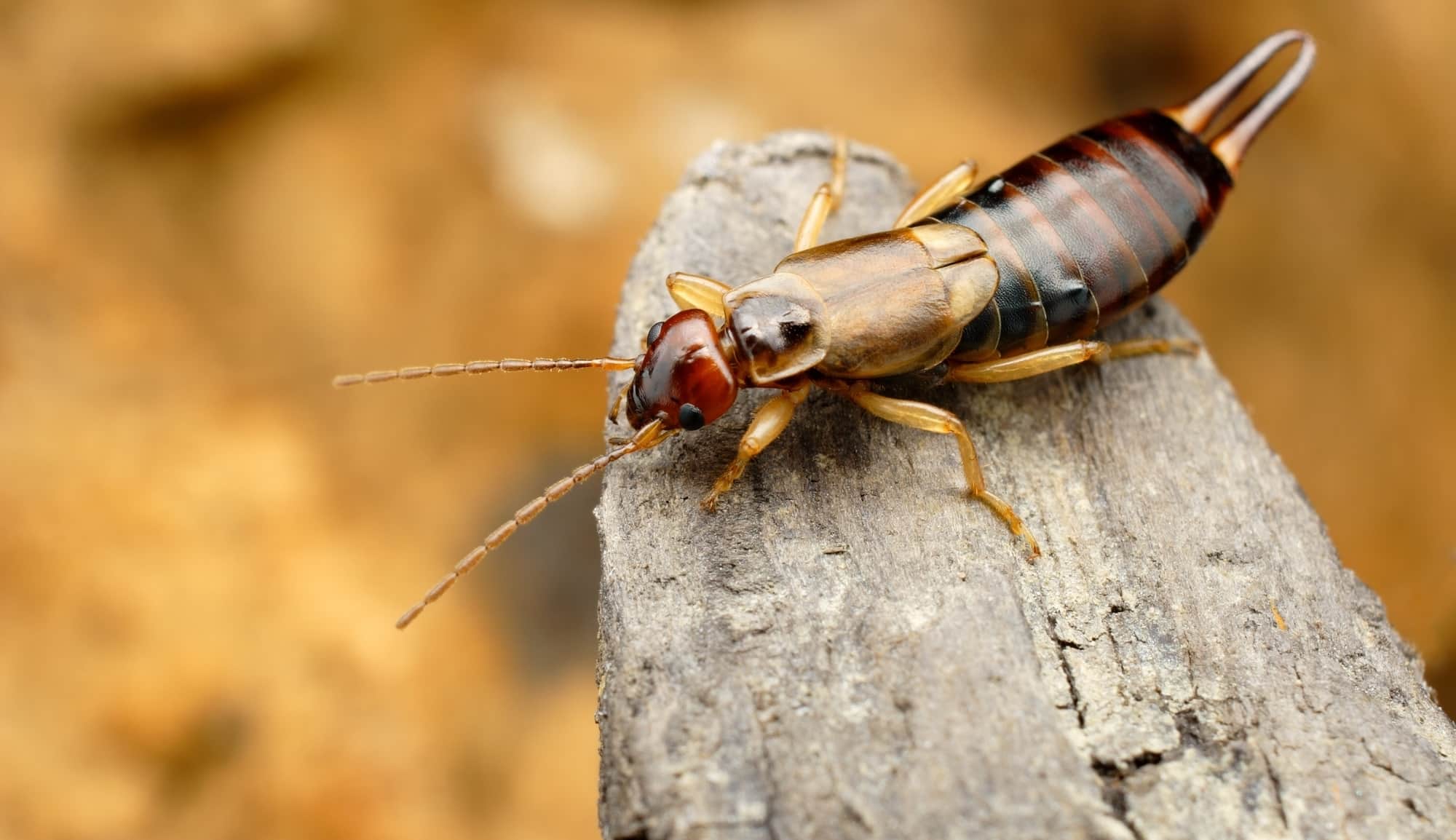Earwigs, also known as pincher bugs, are diminutive insects with dark brown or black bodies that reside in gardens and houses. They possess the ability to be beneficial creatures, as they feed on larvae, aphids, and other insect eggs. However, these creatures can also become bothersome pests as they munch on plant leaves and roots, affecting the overall appearance of garden shrubs and houseplants.
Getting rid of pincher bugs can prove to be quite challenging. These small creatures are nocturnal, seeking refuge in dark crevices and cracks during the daytime. Therefore, their activities are often noticed only when the lights are turned on at night. The most effective method of controlling these pests is to minimize hiding spots in your yard and seal any cracks around doors and window frames.
This article serves as a guide for identifying earwigs, those vexing creatures. It includes detailed descriptions and images of these slim, brown insects scurrying across floors. Additionally, it provides information about their life cycle and preferred habitats in yards, aiding in the implementation of measures to manage pincher bug populations.
What are Earwigs (Dermaptera)?
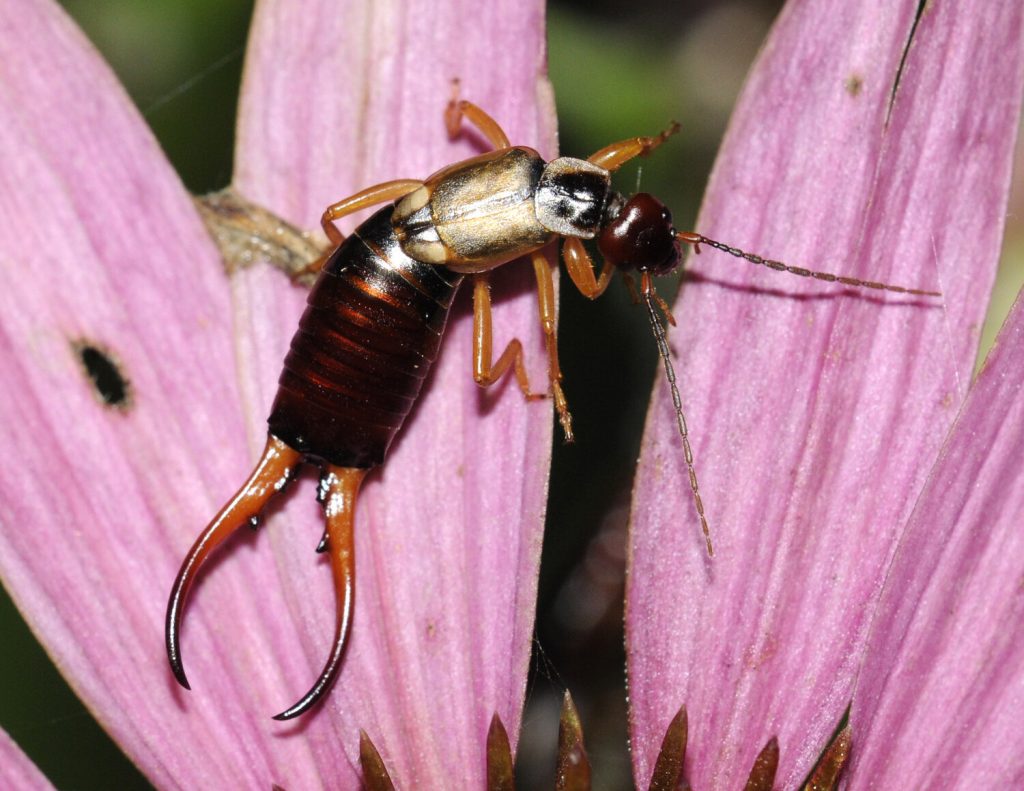
Earwigs belong to the Dermaptera order and are a class of insects. These nocturnal pests possess forceps-like pincers called cerci, six legs, and two antennae. Most earwig species possess short forewings that cover folded hindwings, which expand like a fan. While they are capable of flight, they rarely take to the skies.
In some ways, earwigs resemble small, brown cockroaches. Pincher bugs typically inhabit moist cracks in the soil, feeding on decaying organic matter.
Pincher Bug Facts
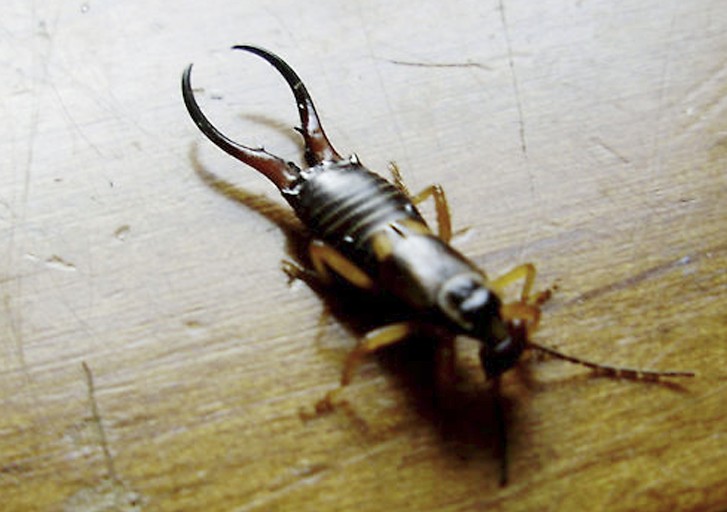
There are more than 1,800 species of earwigs, with approximately 25 found in North America. The native earwig species is known as the spine-tailed earwig (Doru aculeatum). This insect has a dark chestnut brown abdomen, large rear pincers, a light tan-colored thorax, and light brown legs. It measures around 0.31″ (8 mm) in length.
Pincher bugs are also commonly referred to as earwigs. By looking at pictures of these slender insects, one can easily understand how they acquired their common name. When these bugs scuttle across the ground, they menacingly raise their pincers. However, it is important to note that earwigs do not use their pincers to bite humans.
So, how did earwigs earn their name? Is it true that they crawl into ears at night to lay eggs? Fortunately, pinching bugs do not engage in such behavior. The name “earwig” actually comes from the shape of their hindwings, which resemble a human ear.
It is possible to differentiate between male and female earwigs by observing the shape of their pincers. Male earwigs possess curved pincers at the tip of their abdomen, while females have straight, slender pincers. Aside from this distinction, male and female earwig bugs share a similar appearance.
Although earwigs may be bothersome due to their pincers, they pose no danger to humans. They spend their nights scavenging for food and are not social creatures, making home infestations rare. However, large numbers of earwigs may be found indoors during the summer when they are most active.
How to Identify Earwigs
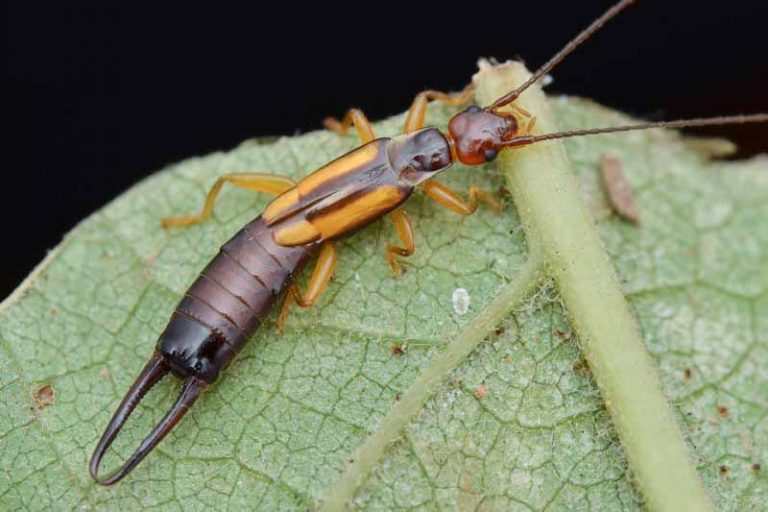
Earwigs are easily identifiable by their slender, reddish-brown to dark brown, flattened bodies. These small insects have dark mahogany abdomens, lighter-colored wing covers, and reddish-brown heads. They possess tan-colored legs and two serrated antennae. Additionally,
earwigs feature characteristic pincers at the rear end of their bodies.
The most common earwig species in North America is the common earwig (Forficula auricularia), measuring approximately 0.47″ to 0.60″ (12-15 mm) in size.
What do Earwigs Eat?
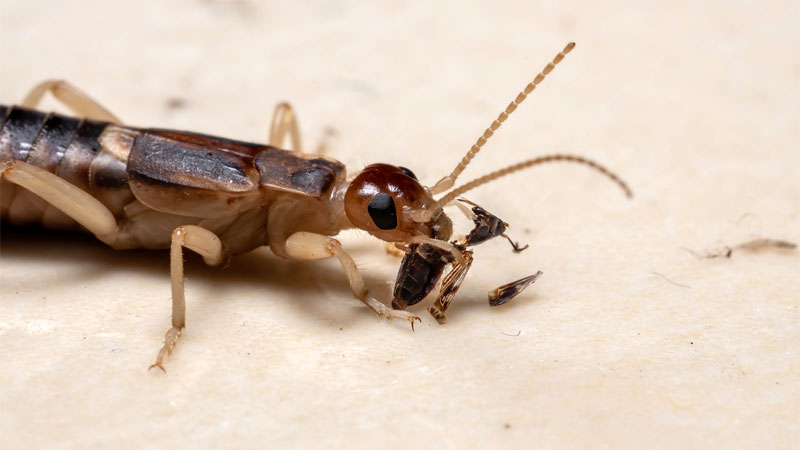
Earwigs are omnivorous insects, consuming decaying vegetation, plant leaves, and small invertebrates. They prey on aphids, plant lice, flies, and other bothersome bugs. However, they also feed on healthy seedlings, tender shoots, ornamental shrubs, and certain crops. Thus, their feeding habits can make them pests in yards.
Does a Pincher Bug Bite?
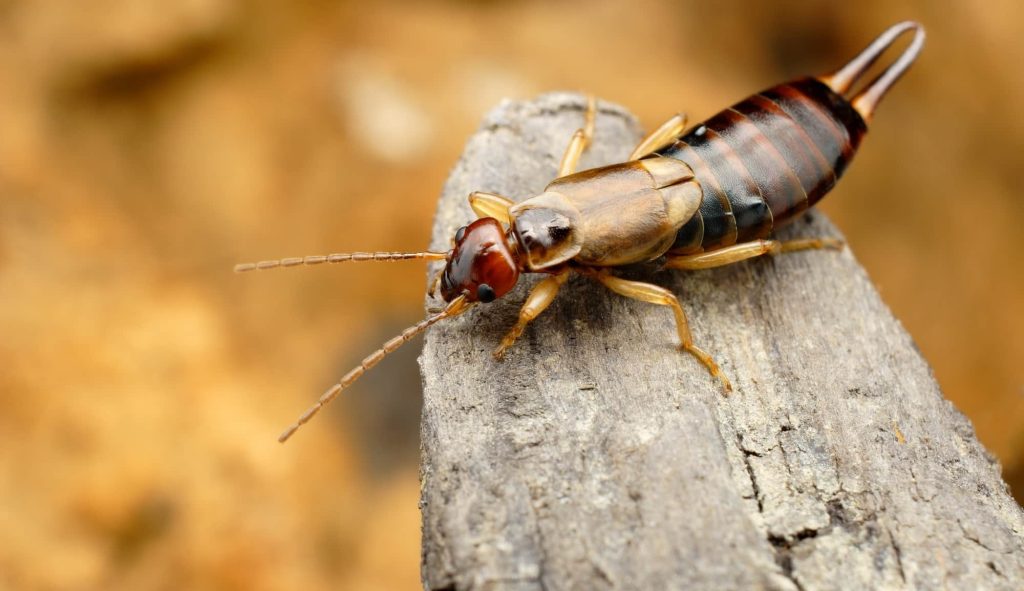
Earwigs do not bite humans and only resort to using their pincers when they feel threatened. However, their pinching action is typically painless and barely noticeable. On the other hand, pincher bugs employ their mouthparts to bite into plant tissue and feed on tiny insects.
Pincher Bug Life Cycle
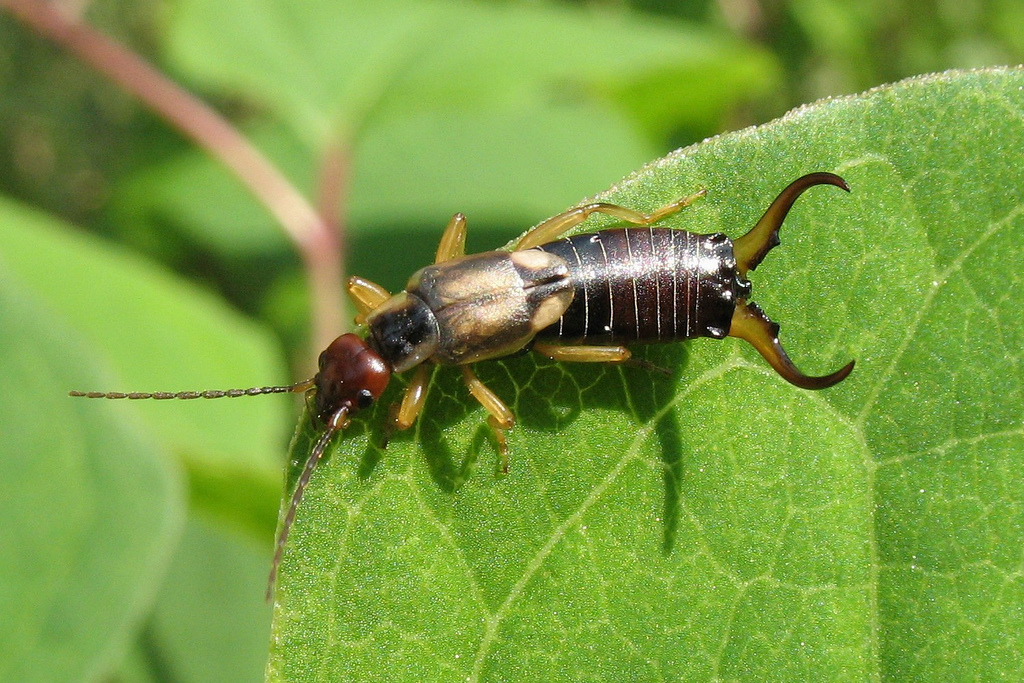
The life cycle of an earwig begins with a tiny egg laid by females in nests during spring. After seven days, the earwig larvae hatch from these eggs. Baby earwigs emerge from the ground in May or June, and by early July, they have transformed into adults and remain active until late fall.
Pincher bugs overwinter in nests, and the earwig life cycle restarts in spring.
Pincher Bugs Damage
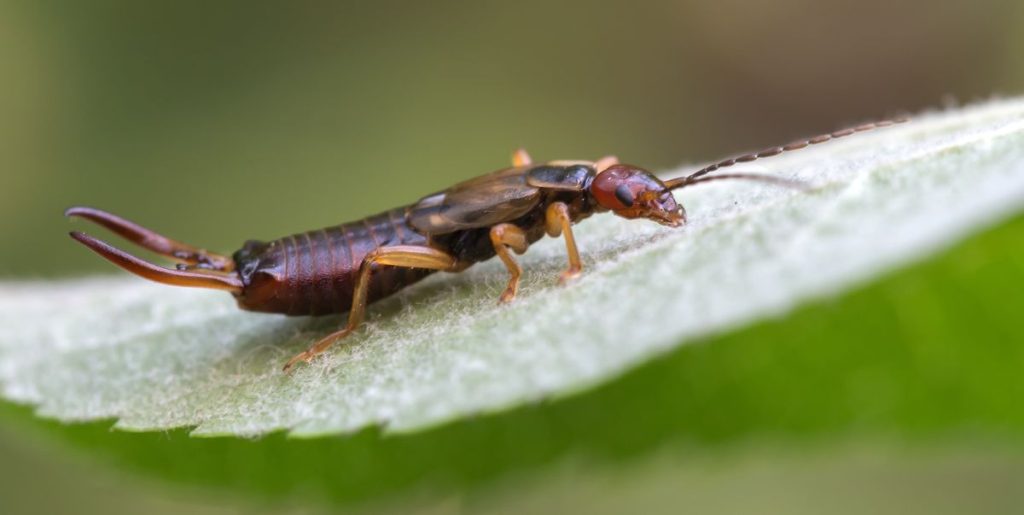
Pincher bugs can become pests in yards, feeding on various types of vegetation from late June to October. While they consume decaying plant matter, they also cause damage to healthy plants. For instance, they create irregular holes in the leaves of hostas, marigolds, butterfly bushes, and sunflowers. Additionally, they can kill seedlings.
Although earwigs often find their way into houses, they do not cause property damage. They are most active indoors during the nighttime in July and August. The good news is that they do not bite humans or feed on food. However, the foul odor they occasionally emit serves as an indication of their presence in the house.
Signs of Pincher Bugs
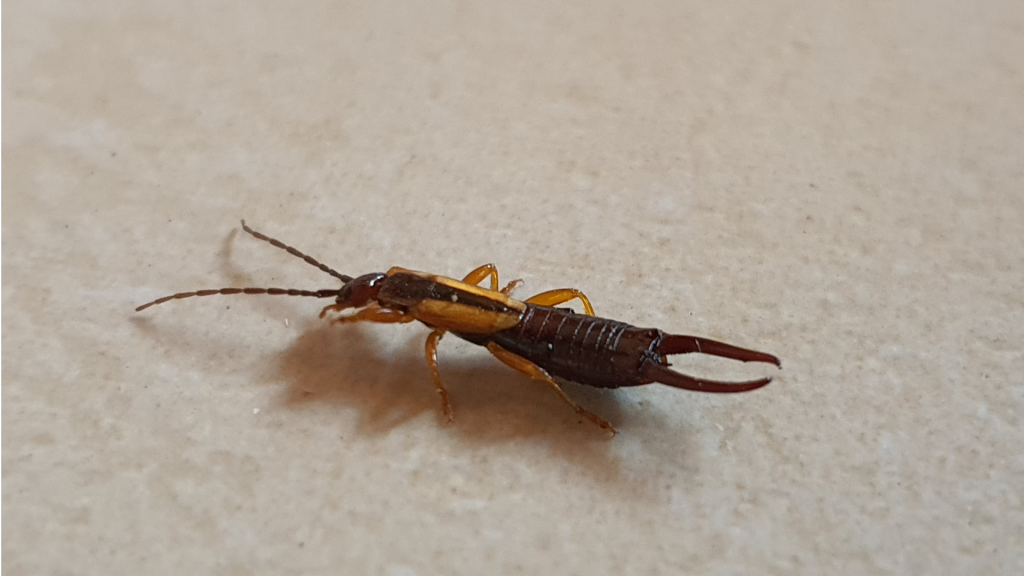
Signs of earwig activity include a repugnant odor and ragged holes along leaf edges. Earwigs typically emerge at night and prefer cool, moist environments. They primarily live and feed outside, making them less likely to invade homes compared to other insects. If they do make their way indoors, their stay is short-lived, and their presence may go unnoticed.
How can you determine if you have an earwig problem in your yard or house? Here are a few telltale signs.
Foul odor
The most common sign of an earwig infestation in your home is a strong, unpleasant odor. Earwigs possess a yellow liquid in their abdomen, which they release or squirt from scent glands as a defense mechanism when they feel threatened or are squashed. This secretion has a foul smell that is hard to miss.
If you observe an earwig scurrying away, remember that it will emit an unpleasant stench if crushed.
Damage to houseplants
Have you noticed ragged edges on the leaves of your houseplants? This could be an indication of earwig activity, especially during July and August. Additionally, you might notice nibbles on the petals of houseplant flowers.
While earwigs rarely cause significant indoor infestations, houseplant damage could signify the presence of a large number of pincher bugs. Therefore, it is important to take swift action to eliminate them.
Pincher bug sightings
If you come across a slender brown insect with pincers at the tip of its abdomen, it is a definite sign of pincher bugs in your
house. This is typically observed when you switch on the lights at night or disturb the dark crevices where earwigs seek refuge.
Thus, it is crucial to eradicate potential hiding spots to prevent their presence.
How to Get Rid of Pincher Bugs in Your House
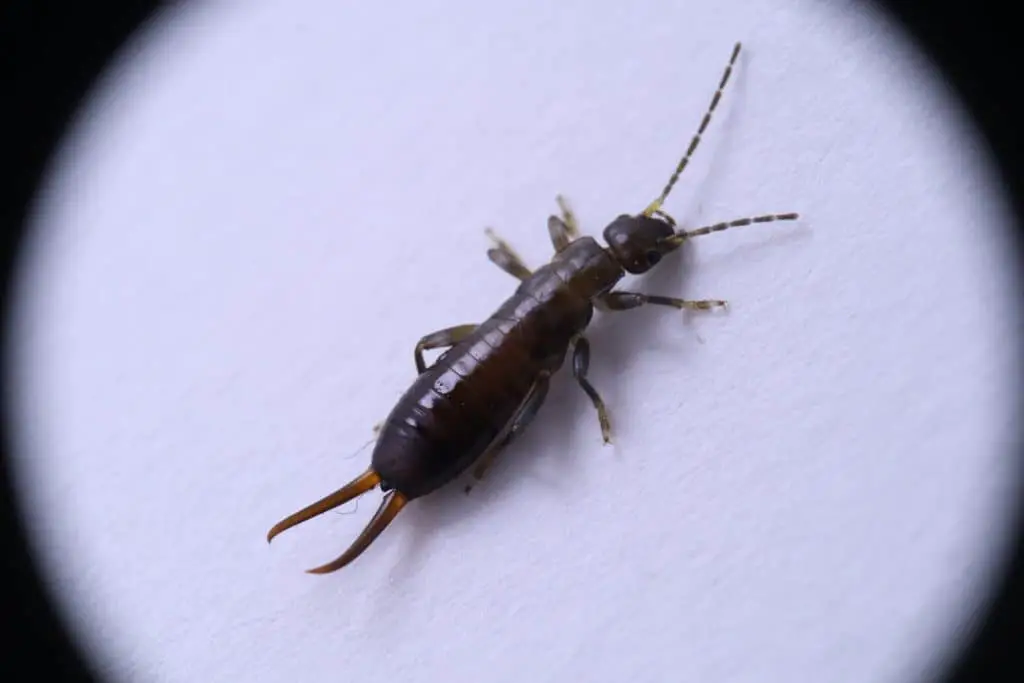
Eliminating pincher bugs can be challenging due to their nocturnal nature, which makes them difficult to spot. Sometimes, you may catch a whiff of their musky scent but struggle to locate their hiding places. Here are some useful tips for eradicating pincher bugs from your home.
DIY pincher bug spray for houseplants
Create a homemade bug spray to kill earwigs on contact, rather than squashing them and enduring the lingering foul smell. To make the spray, fill a spray bottle with warm water, add a teaspoon of dish soap, and shake it well to mix the ingredients. Then, spray the soapy mixture on plants that exhibit earwig activity. You can also apply the earwig spray directly to the bugs if you encounter them indoors.
For a more potent solution, mix equal parts of rubbing alcohol and water in a spray bottle. Spray it directly on the earwigs to eliminate them instantly. This bug spray can also be effective against other bothersome insects in your pantry, under sinks, or in the garden.
Use boric acid to eliminate earwigs in the house
Boric acid is a natural insecticide that effectively kills earwigs and other nuisance bugs. Simply sprinkle the white powder in areas where you suspect earwig activity, such as along baseboards, under furniture, or in crawl spaces.
You can also apply boric acid around woodpiles or damp areas in your yard to eradicate brown bugs.
A word of caution: Although boric acid is relatively safe to use, it should be kept away from children and pets.
Eliminate indoor moisture issues
Earwigs are attracted to moisture and damp conditions inside your home. They tend to linger if they find a food source and damp corners. To combat these annoying creepy crawlies, ensure there are no leaking pipes in your home.
Basements are often dark, damp areas that earwigs find appealing. Therefore, it is advisable to address any moisture problems in your home.
How to Get Rid of Earwigs in the Garden
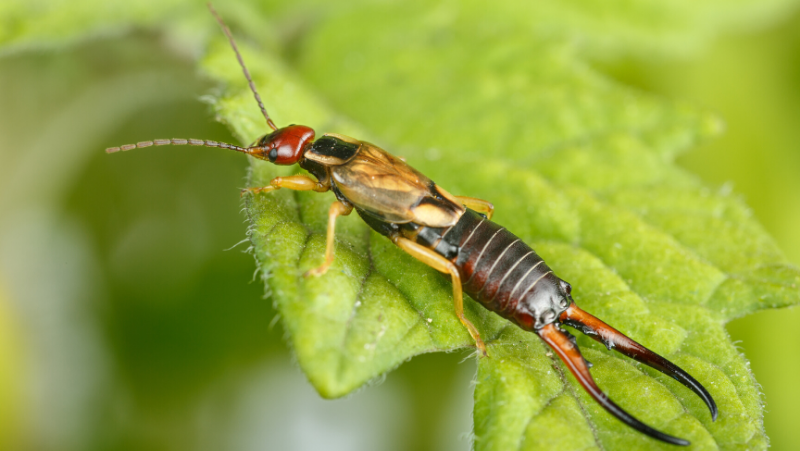
Determining whether you need to remove earwigs from your yard can be a tricky question. On one hand, pincher bugs feed on aphids, insect larvae, grubs, and other pests, playing a vital role in a garden’s ecosystem. On the other hand, excessive numbers can start damaging your plants.
Where are earwigs commonly found in gardens? They typically inhabit areas under stones, mulch, dead logs, compost heaps, or crevices in the soil. You may also encounter them among flowers. However, be careful not to disturb them excessively, as they may release a repugnant odor.
Usually, a few earwigs do not warrant immediate action. However, if you notice a large number of them, taking precautionary measures is advisable. But how can you eradicate earwigs from your yard? Here are a few tips.
Use oil traps in the garden to eliminate earwigs
Employing a vegetable oil and soy sauce trap can help eliminate pincher bugs from your yard. The scent of soy sauce attracts these tiny creatures to the trap, and the oil mixture prevents their escape.
To create an earwig trap, you will need a small container with a lid. Make holes in the lid, approximately 0.25″ (64 mm) in diameter. Mix equal parts of vegetable oil and soy sauce and pour the mixture into the container. Seal the container with the lid.
Next, bury the container in the ground up to the lid, preferably in a damp corner of your yard or near a compost heap where earwigs tend to congregate. If necessary, place multiple traps throughout the garden.
Diatomaceous earth (DE) for outdoor earwig control
You can eliminate earwigs from your garden without resorting to chemicals by using diatomaceous earth (DE). DE is a naturally occurring substance with a white powdery texture that is highly abrasive to the exoskeletons of pincher bugs. Therefore, DE can be safely employed for bug control without worrying about soil, plant, or water contamination.
During dry weather, sprinkle food-grade diatomaceous earth in areas of your garden where you suspect earwig activity. As the bugs come into contact with the white powder, it damages their protective covering, causing them to dehydrate and die.
According to researchers at Utah State University, DE becomes ineffective when exposed to moisture. Therefore, reapplication is necessary after rainfall and subsequent drying of the soil.
Eliminate hiding places for pincher bugs
Transforming your yard into an inhospitable environment for pincher bugs is an effective method of eliminating their presence. Earwigs favor dark, moist places with decaying vegetation. Thus, it is important to keep woodpiles, compost heaps, and mulch away from your home.
Additionally, minimize excessive moisture in your yard.
How to Control and Prevent Pincher Bugs
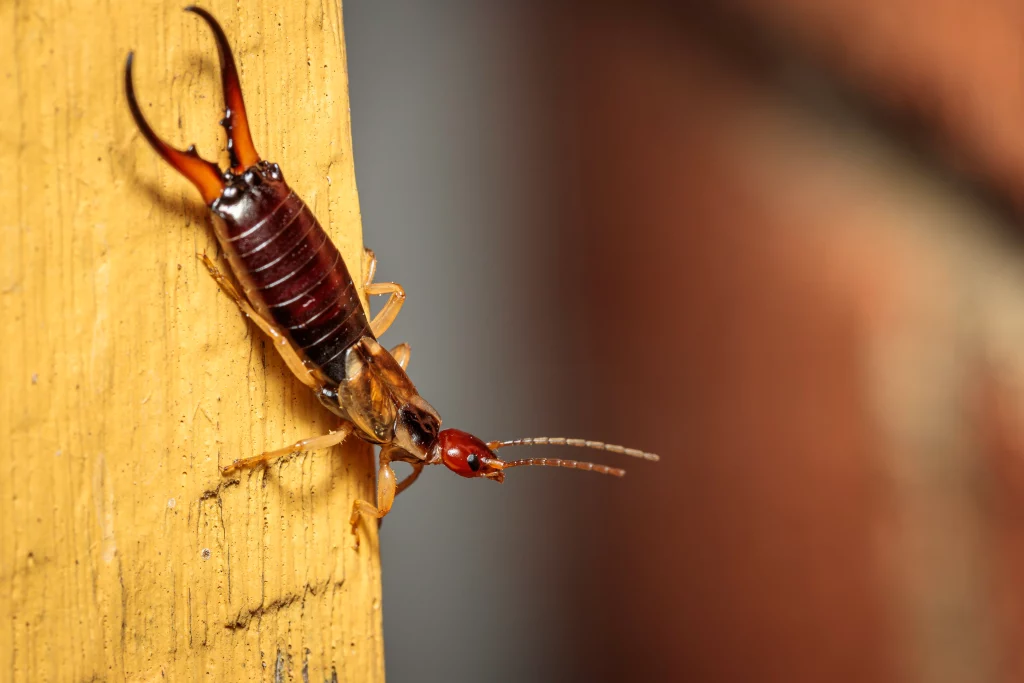
Controlling earwigs to prevent their entry into your home is the most effective way to deal with the problem. However, a few pincher bugs in your yard should not cause undue concern. In fact, several earwigs can actually be beneficial to your garden. Nevertheless, it is essential to ensure that their numbers do not escalate to the point of becoming an indoor problem.
By taking the following steps to prevent earwig infestations, you will also reduce the likelihood of other unpleasant bugs invading your home.
Install window and door screens
During the summer months, use window and door screens to effectively control earwigs. The mesh screens act as a barrier, preventing earwigs and other flying insects from entering your house. Screens are affordable and highly efficient.
Seal cracks and crevices
As part of your spring yard cleanup, thoroughly inspect the exterior of your home. Look for small gaps and cracks through which earwigs could potentially enter. Seal these openings with weatherproof sealant. Keep in mind that earwigs are around 0.5″ (13 mm) in length and possess flattened bodies, making it easy for them to squeeze through tiny gaps.
Maintain a tidy yard
Avoid creating a haven for small critters like earwigs in your yard. Keep it free of debris and unnecessary vegetation. Earwigs thrive in dark, moist, and shady corners. Therefore, ensure that trees and bushes are well-trimmed. If you use mulch for weed control, keep it a distance away from your home’s foundation. The same applies to compost and woodpiles.
Clean gutters and drainpipes
In spring, clean your gutters to remove dead leaves and debris, eliminating potential hiding spots for earwigs. This not only prevents bug issues but also helps to prevent dampness problems in your home. Additionally, inspect drainpipes to ensure they effectively divert water away from your property instead of allowing it to accumulate near the foundations.
Why Earwigs are Invading Your House
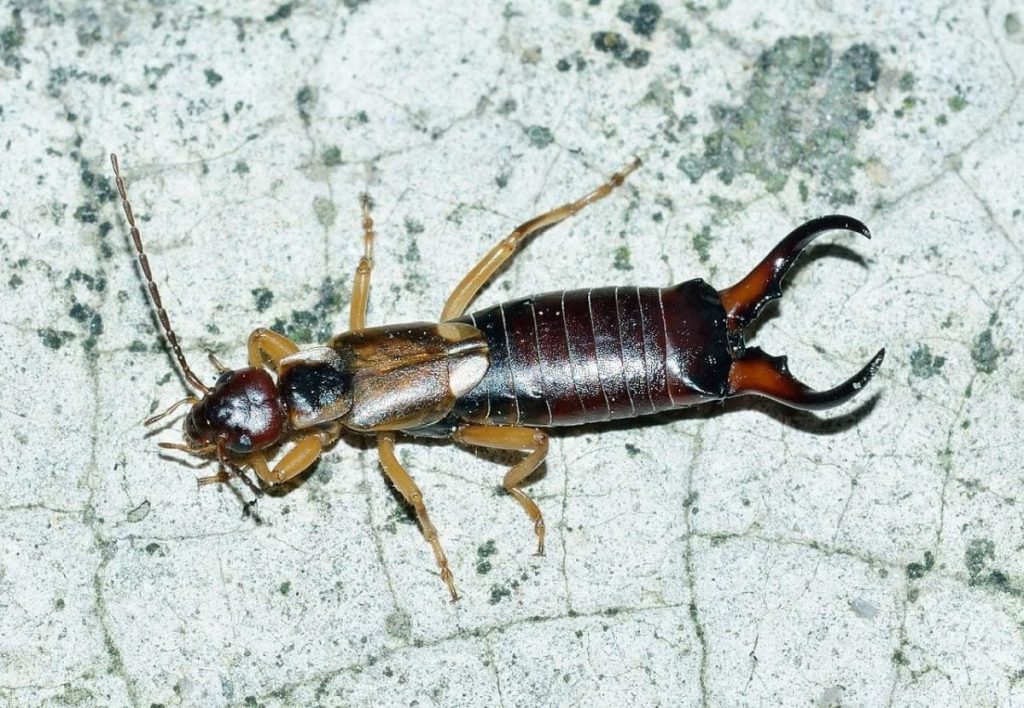
Earwigs tend to seek shelter in homes for three primary reasons. Firstly, they enter houses in search of food. Secondly, they seek refuge from extreme weather conditions, such as excessive heat or cold. Lastly, during dry summers, they may invade homes in search of moisture sources.
